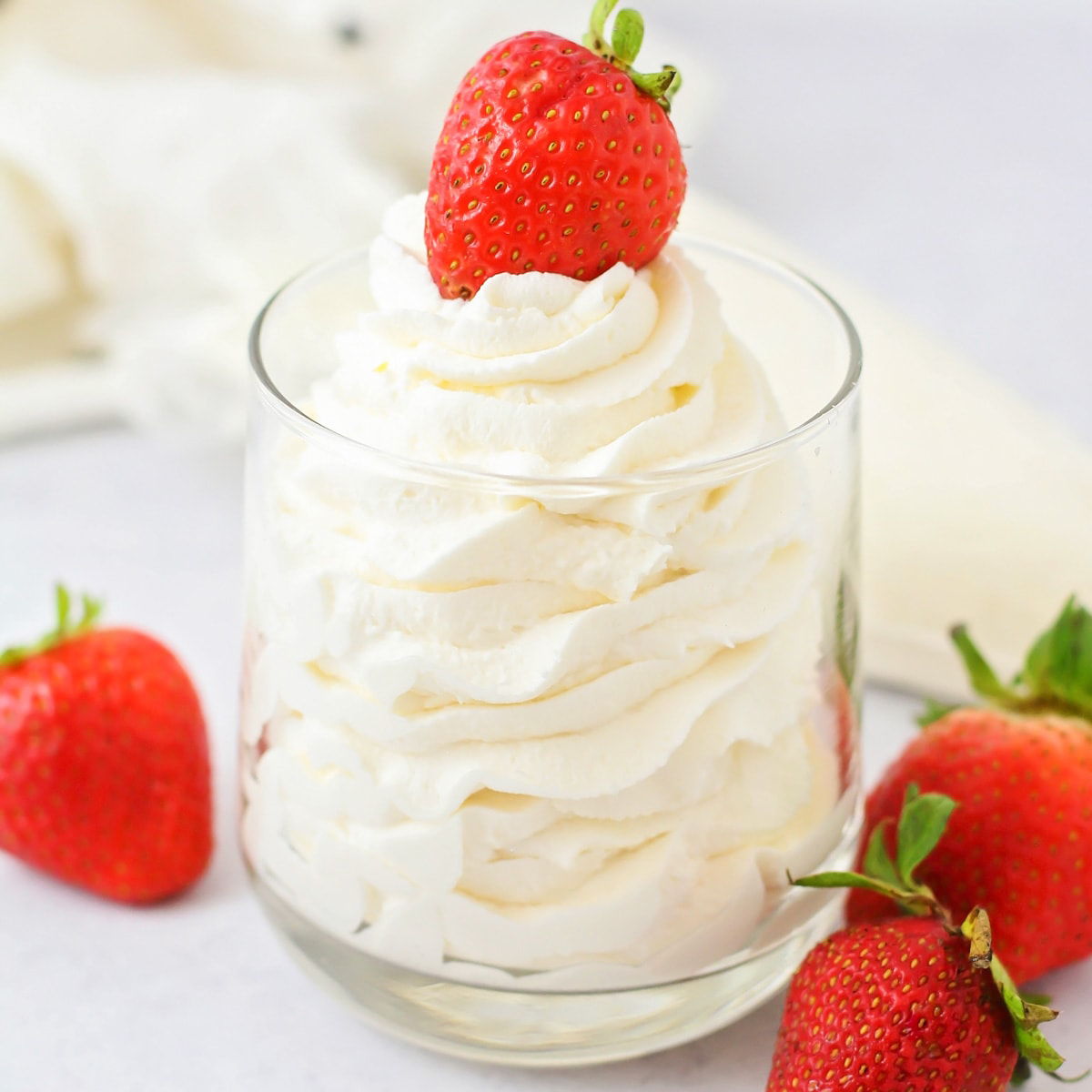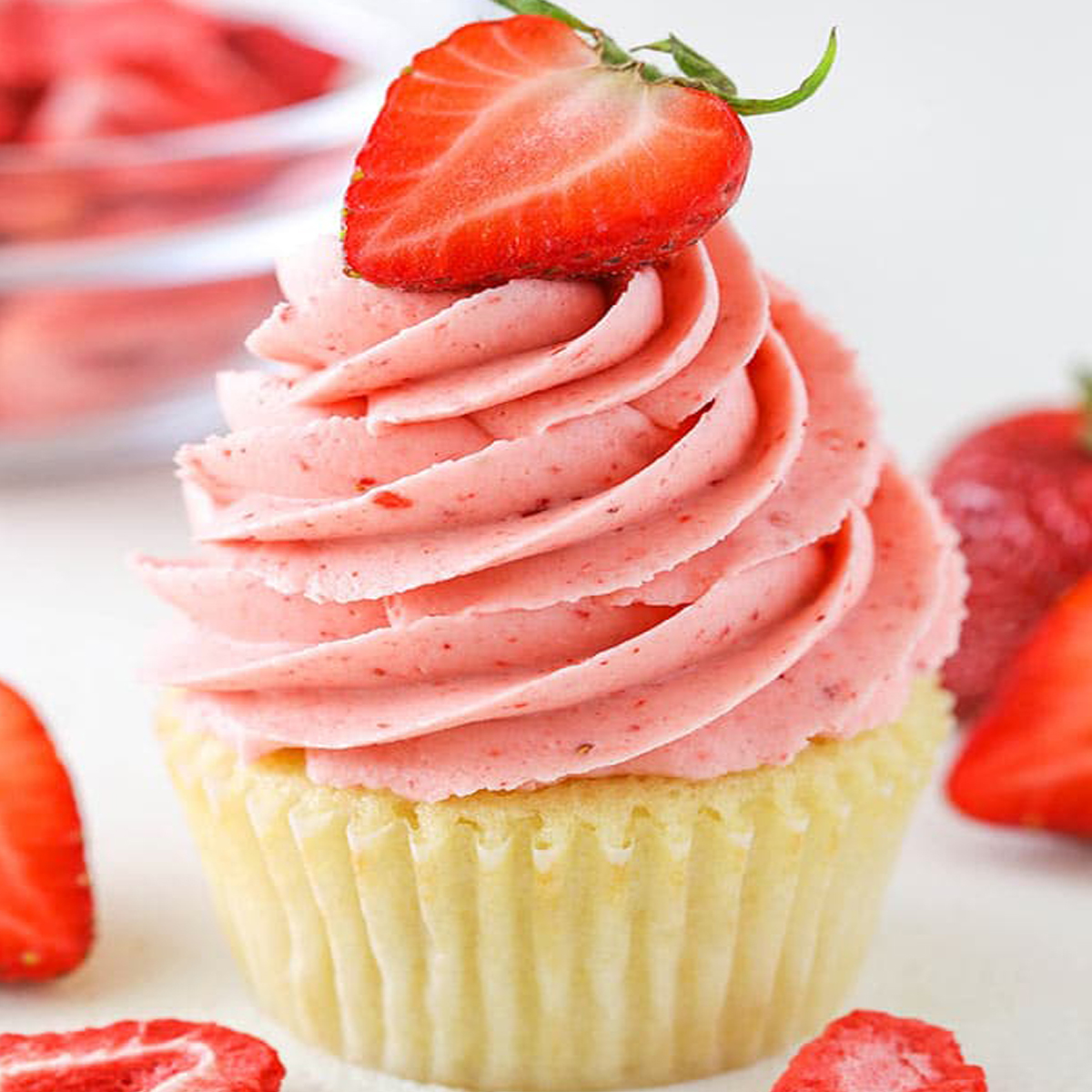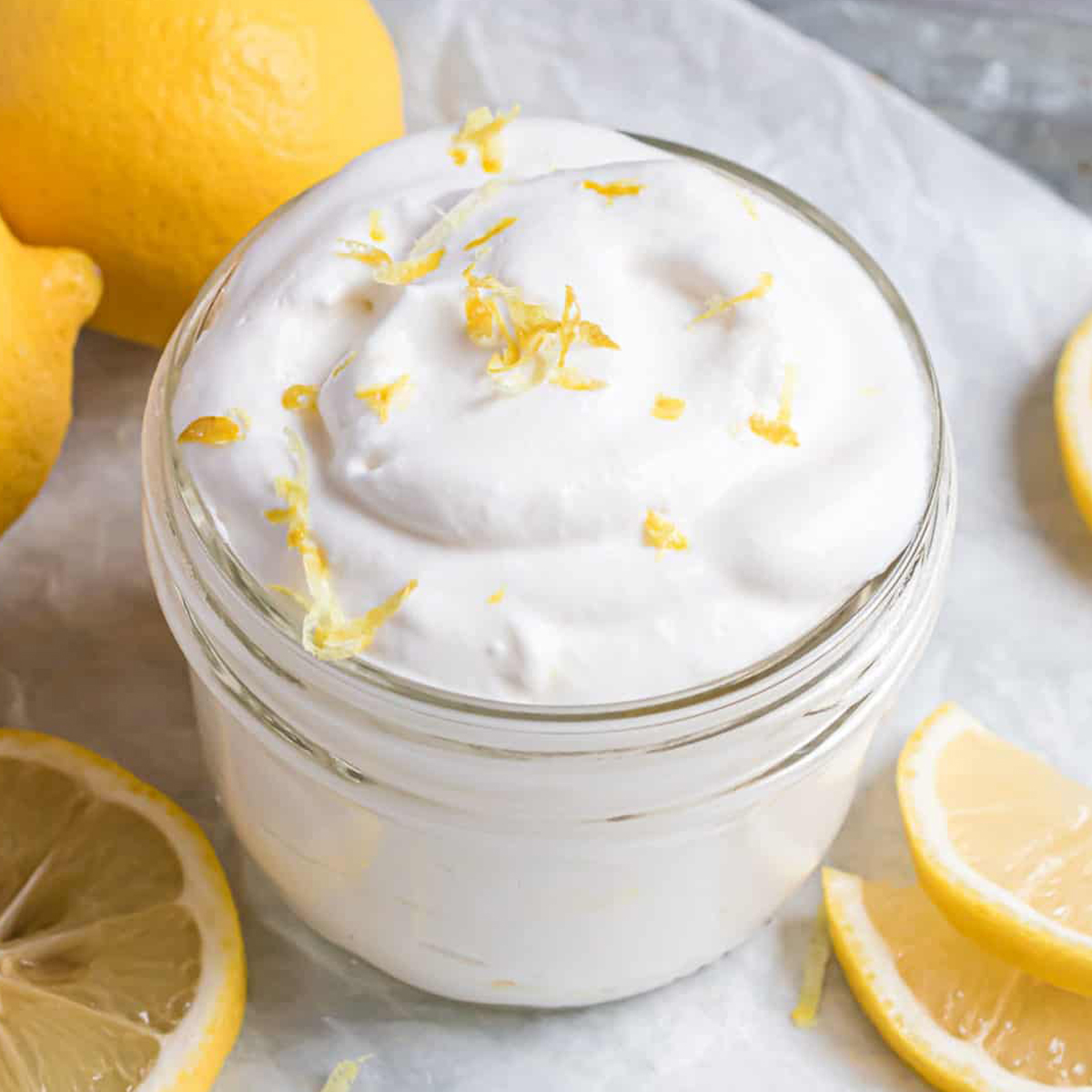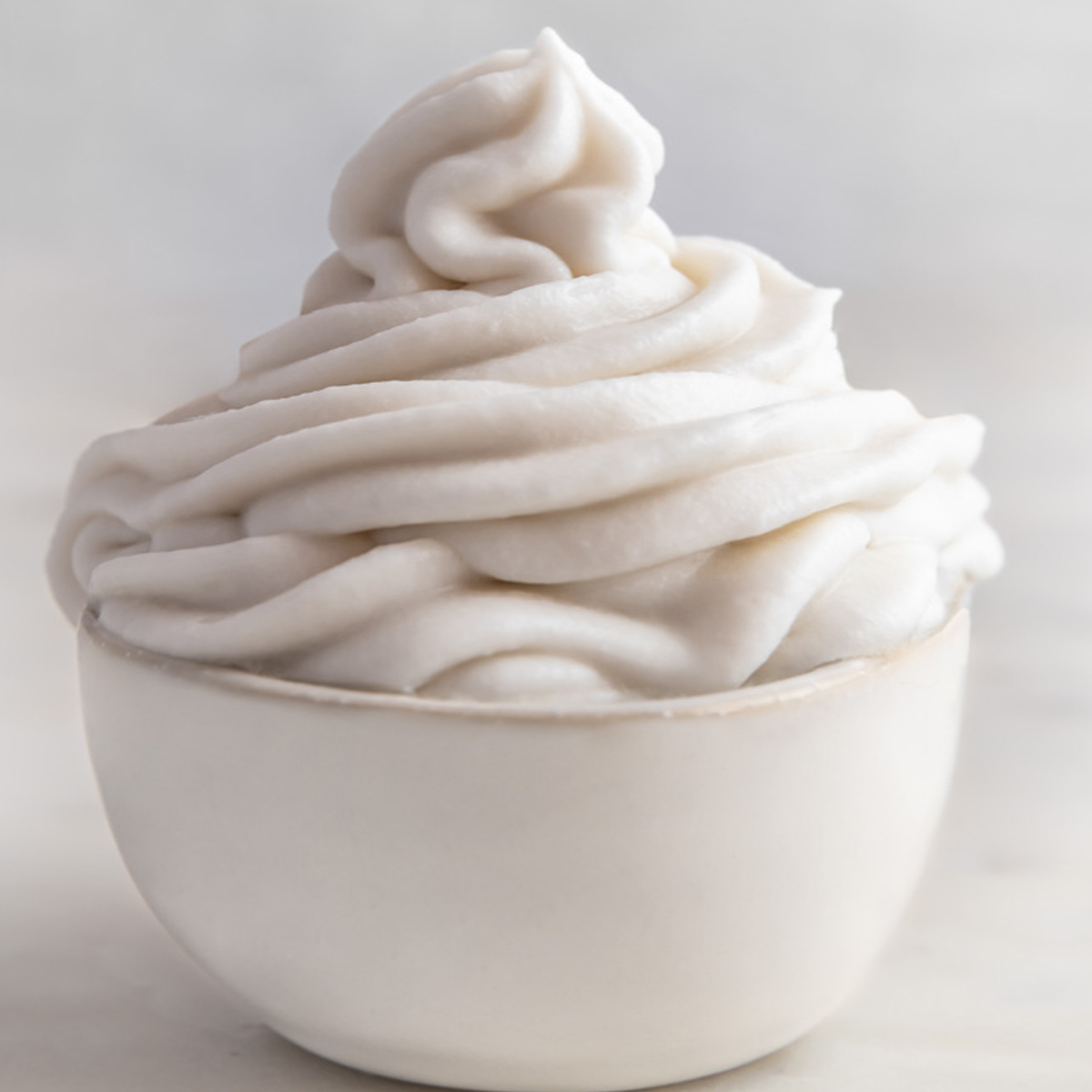Stabilized whipped cream is a culinary marvel that brings a new level of elegance and longevity to your favorite desserts. This delightful creation retains the lightness and airy texture of traditional whipped cream, while boasting the added advantage of maintaining its shape and freshness for extended periods. Through a careful fusion of culinary techniques, this versatile topping opens up a realm of creative possibilities, allowing both amateur and seasoned chefs to garnish cakes, pies, pastries, and beverages with finesse. Join us as we explore the art and science behind stabilized whipped cream, and discover how this ingenious concoction is revolutionizing the world of confectionery.
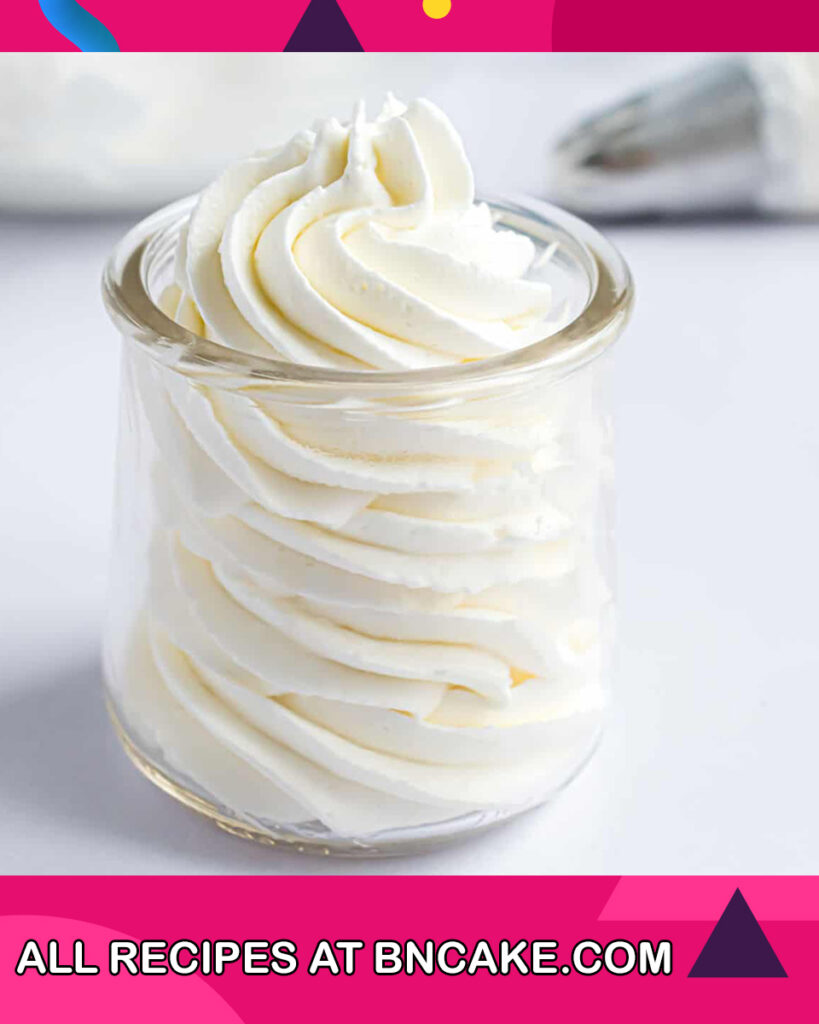
What Is Stabilized Whipped Cream?
Stabilized whipped cream is a modified version of traditional whipped cream that has been fortified with stabilizing agents to enhance its texture, shelf life, and ability to hold its shape. Regular whipped cream, made by whipping heavy cream and sometimes adding sugar and flavorings, tends to lose its airy consistency and start deflating relatively quickly. Stabilized whipped cream, on the other hand, maintains its fluffiness for a longer duration, making it a popular choice for desserts that require a decorative and enduring topping.
The stability is achieved by incorporating stabilizing agents, which are often gelatin, cornstarch, cream cheese, or powdered sugar. These agents help to trap air within the cream, preventing it from collapsing and maintaining its volume over time. This characteristic is particularly useful when decorating cakes, pies, cupcakes, and other baked goods, as the whipped cream will hold its shape even after hours of being applied.
Stabilized whipped cream strikes a balance between the airy lightness of traditional whipped cream and the structural integrity needed for certain dessert presentations. It offers a versatile canvas for various flavorings, colors, and decorative elements, making it a favorite among bakers and dessert enthusiasts alike. Whether you’re aiming to create intricate designs or simply looking to ensure that your dessert remains as appealing as when it was first prepared, stabilized whipped cream is a valuable tool in the world of culinary artistry.
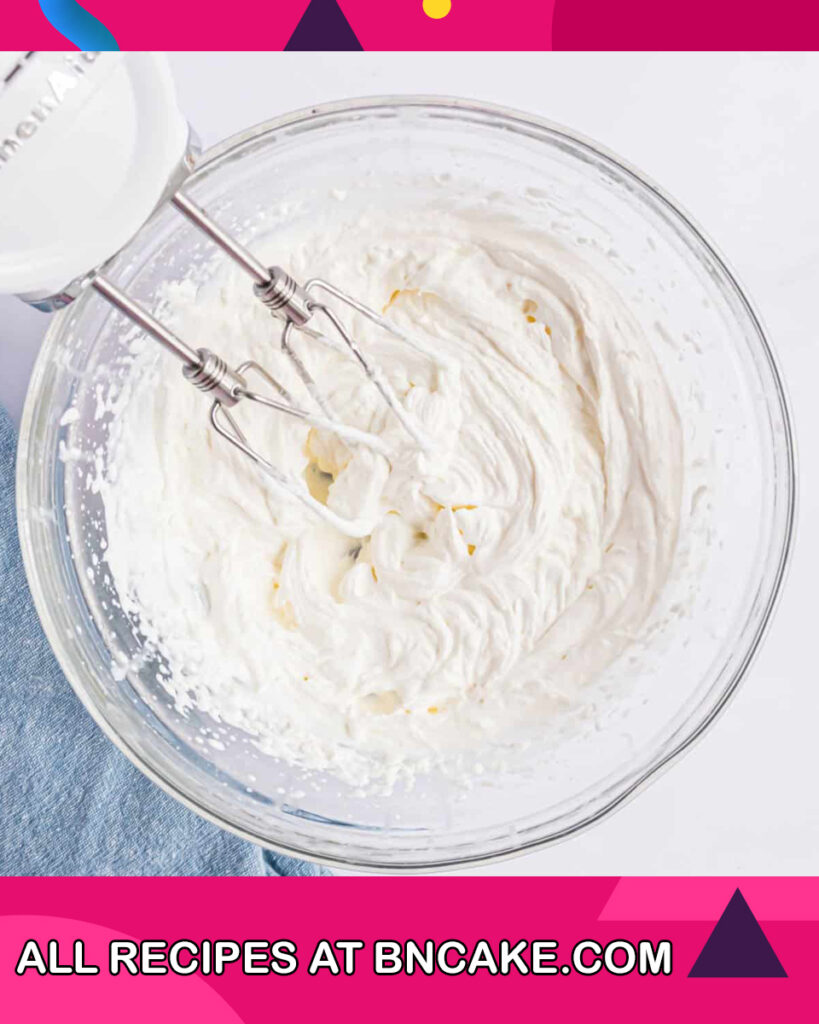
Why You Will Love Stabilized Whipped Cream Recipe?
Our stabilized whipped cream recipe is a game-changer for anyone who appreciates the delicate indulgence of traditional whipped cream but desires the added convenience, longevity, and versatility that comes with a stable and durable texture. Here’s why you’re going to fall in love with our recipe:
- Long-Lasting Delight: Our recipe incorporates the perfect blend of stabilizing agents to ensure that your whipped cream maintains its airy consistency and luxurious flavor for an extended period. Say goodbye to deflated toppings and hello to desserts that remain picture-perfect, even hours after preparation.
- Versatile Creativity: With our stabilized whipped cream, your culinary creativity knows no bounds. Whether you’re piping intricate designs onto cakes, sculpting elegant rosettes, or dolloping onto beverages, its firm structure allows you to execute your vision flawlessly.
- Make-Ahead Magic: Prepare your whipped cream in advance and save time when assembling desserts for parties, gatherings, or special occasions. The stability of our recipe means you can confidently prepare your whipped cream element ahead of time, without worrying about its texture changing.
- Flavor Harmony: Our recipe keeps the focus on the pure, delightful taste of whipped cream, ensuring that the stabilizing agents do not compromise the flavor profile. Whether you’re pairing it with fruits, cakes, or pastries, the creamy goodness shines through.
- User-Friendly Instructions: Our step-by-step instructions make whipping up this stabilized whipped cream a breeze. Whether you’re a seasoned baker or a novice in the kitchen, our recipe ensures your success.
- Picture-Perfect Desserts: Elevate your dessert presentation to a whole new level. Imagine a luscious strawberry shortcake or a velvety pie topped with flawlessly piped stabilized whipped cream – the visuals are just as delightful as the taste.
- Consistent Results: Achieve dependable results every time you make our stabilized whipped cream. No more worrying about temperature fluctuations or deflated peaks – our recipe guarantees a consistent outcome.
- Happy Guests: Impress your friends, family, and guests with desserts that not only taste amazing but also look professionally crafted. Our stabilized whipped cream adds that extra touch of elegance to any sweet treat.
Experience the joy of a dessert topping that marries the best of both worlds: the ethereal lightness of whipped cream and the resilience of a well-crafted creation. Our stabilized whipped cream recipe is your secret to transforming ordinary desserts into extraordinary delights. Get ready to savor the compliments as you introduce a new level of dessert perfection to your culinary repertoire.
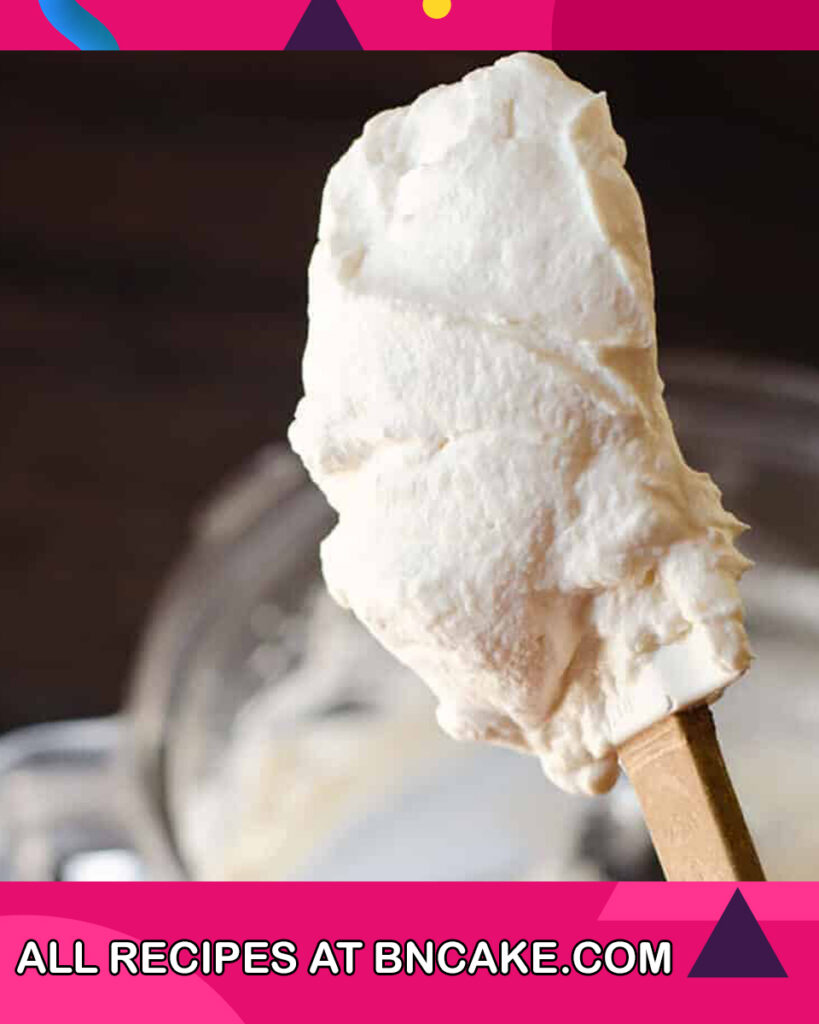
Ingredients For Stabilized Whipped Cream
- 1 cup heavy whipping cream (cold)
- 2 tablespoons powdered sugar
- 1 teaspoon vanilla extract
- 1 teaspoon gelatin powder
- 4 teaspoons cold water
How To Make Stabilized Whipped Cream
- Prepare the Gelatin Mixture:
- In a small bowl, combine 1 teaspoon of gelatin powder with 4 teaspoons of cold water.
- Allow the gelatin mixture to sit and bloom for about 5 minutes. This will ensure that the gelatin fully absorbs the water and becomes pliable.
- Dissolve the Gelatin:
- After blooming, gently heat the gelatin mixture. You can do this by microwaving it in 5-second intervals or by placing the bowl in a larger bowl of hot water. The goal is to dissolve the gelatin completely, but be cautious not to overheat it.
- Once the gelatin is fully dissolved, set it aside to cool slightly. It should still be in liquid form.
- Chill Equipment:
- To ensure the best results, place a mixing bowl and beaters (or whisk attachment) in the refrigerator for about 15 minutes before starting. Chilling the equipment helps in achieving a better whipped cream texture.
- Whip the Cream:
- In the chilled mixing bowl, pour in 1 cup of cold heavy whipping cream.
- Begin whipping the cream on medium speed. As the cream starts to thicken slightly, add 2 tablespoons of powdered sugar gradually. This will sweeten the whipped cream.
- Add Flavor and Stabilization:
- While the cream is still whipping, pour in 1 teaspoon of vanilla extract for flavor.
- Gradually pour the slightly cooled dissolved gelatin mixture into the whipping cream. The gelatin will help stabilize the whipped cream and maintain its shape over time.
- Whip to Stiff Peaks:
- Continue whipping the cream on medium-high speed until stiff peaks form. This means that when you lift the beaters (or whisk) out of the cream, the peaks should hold their shape without collapsing. Be cautious not to over-whip, as the cream could turn into butter.
- Use or Store:
- Your stabilized whipped cream is now ready to use immediately for your dessert creations.
- If you plan to use it later, store it in the refrigerator for up to 24 hours. Before using, give it a gentle whisk to restore its texture, as it might have slightly settled during storage.
Notes:
- Feel free to adjust the sweetness of the whipped cream by adding more or less powdered sugar according to your taste preferences.
- If you’d like, you can explore alternative stabilizing agents such as cornstarch or cream cheese. Adjust quantities as needed.
- This stabilized whipped cream is ideal for decorating cakes, pies, pastries, and more, providing an elegant and long-lasting topping for your desserts. Enjoy your culinary creation!

How To Serve Stabilized Whipped Cream
Serving stabilized whipped cream is a delightful experience that enhances the presentation and taste of your desserts. Here’s how you can serve stabilized whipped cream effectively:
- Choose Your Dessert: Stabilized whipped cream is a versatile topping that pairs well with a wide range of desserts. From cakes and pies to pastries and beverages, select the dessert that complements the creamy and airy texture of the whipped cream.
- Preparation: Before serving, ensure that your stabilized whipped cream is well-prepared and has the desired consistency. If you’ve stored it in the refrigerator, gently whisk it to restore its texture and fluffiness.
- Piping and Decorating: If you intend to use stabilized whipped cream for decorative purposes, transfer it to a piping bag fitted with your preferred tip. This allows you to create intricate designs, swirls, or rosettes on the surface of your dessert.
- Even Distribution: For desserts like pies and tarts, you can spread stabilized whipped cream evenly over the top using an offset spatula. Ensure a smooth and consistent layer that covers the entire surface.
- Cake Topping: When applying stabilized whipped cream to cakes, start from the center and work your way outwards. If you’re covering the sides of the cake, use a spatula to achieve a smooth finish. Alternatively, you can create decorative borders along the edges.
- Garnishing: Stabilized whipped cream is the perfect canvas for garnishing. Consider adding fresh fruits, chocolate shavings, sprinkles, crushed nuts, or edible flowers on top of the whipped cream to add a pop of color and flavor.
- Beverage Enhancement: Float a dollop of stabilized whipped cream on hot beverages like coffee, hot chocolate, or chai tea for an indulgent touch. The creaminess will gradually meld with the drink, enhancing the overall experience.
- Serve Immediately: Once you’ve applied the stabilized whipped cream, it’s best to serve the dessert shortly thereafter. This ensures that the whipped cream maintains its shape and texture, providing the best visual appeal.
- Chilled Desserts: If your dessert requires refrigeration, make sure to store it in the refrigerator until you’re ready to serve. The stabilized whipped cream will hold its shape even in cold temperatures.
- Enjoy the Moment: As you present your dessert with the beautifully stabilized whipped cream, take a moment to appreciate the artistry and the combination of flavors and textures you’ve created. Encourage your guests to savor every bite.
- Leftover Cream: If you have leftover stabilized whipped cream, it can be stored in the refrigerator for up to 24 hours. Remember to give it a gentle whisk before using it again, as it might have settled during storage.
Remember that serving stabilized whipped cream not only adds an aesthetic element to your desserts but also provides a velvety and luxurious texture that elevates the overall culinary experience. Whether you’re aiming for elegance, creativity, or pure indulgence, stabilized whipped cream is a versatile companion that enhances the beauty and taste of your sweet creations.

How To Store Stabilized Whipped Cream
Storing stabilized whipped cream properly is essential to maintain its texture, stability, and freshness. Here’s how to store stabilized whipped cream:
- Refrigeration: Stabilized whipped cream should always be stored in the refrigerator. Its stability is designed to withstand cooler temperatures, making the fridge the ideal place for storage.
- Airtight Container: Transfer the stabilized whipped cream to an airtight container. Choose a container that’s not too large, as extra space can lead to excess air exposure and potential texture changes.
- Covered with Plastic Wrap: Before sealing the container, place a piece of plastic wrap directly on the surface of the whipped cream. This minimizes air contact and helps prevent any condensation from forming on the surface.
- Label and Date: If you anticipate that you might not use the stabilized whipped cream within a day, it’s a good practice to label the container with the date of preparation. This makes it easier to keep track of its freshness.
- Keep Cold: Store the container of stabilized whipped cream on one of the refrigerator’s shelves, not on the door or in the warmer areas. The colder temperature will help maintain its stability and texture.
- Limited Storage: Stabilized whipped cream is best when used within 24 hours of preparation. While it will remain stable for a bit longer, it’s recommended to consume it as soon as possible to ensure optimal taste and texture.
- Gentle Whisking: Before using the stabilized whipped cream again, give it a gentle whisk. This helps restore its airy texture that might have slightly settled during storage.
- Avoid Freezing: Stabilized whipped cream doesn’t freeze well due to its dairy content. Freezing can cause changes in texture and separation, which may affect its quality when thawed.
- Single Servings: If you’re storing individual servings, consider using smaller containers or ramekins. This allows you to use only what you need without repeatedly opening and closing a larger container.
- Layered Desserts: If using stabilized whipped cream in layered desserts like trifles, assemble the dessert just before serving. This ensures that the whipped cream maintains its texture and appearance.
- Do Not Re-Whip: Once stabilized whipped cream has been stored, avoid re-whipping it. While a gentle whisk before using is fine, excessive whipping after storage can lead to texture changes.
By following these storage guidelines, you can ensure that your stabilized whipped cream remains at its best, ready to add a touch of elegance and lusciousness to your favorite desserts.
If you like this recipe, here are some more you may like
- Strawberry Whipped Cream
- Peanut Butter Whipped Cream
- Cheesecake Whipped Cream
- Chocolate Whipped Cream
- Coffee Whipped Cream
Tips And Tricks For Stabilized Whipped Cream
Here are some valuable tips and tricks to help you master the art of making and using stabilized whipped cream:
- Chilled Equipment: For the best results, chill the mixing bowl and beaters (or whisk attachment) in the refrigerator for about 15 minutes before whipping the cream. Cold equipment helps the cream whip faster and to a better consistency.
- Quality Ingredients: Use high-quality heavy whipping cream, as it contains a higher fat content which contributes to a more stable whipped cream.
- Proper Gelatin Dissolution: When dissolving gelatin, avoid overheating it. Microwave in short intervals or use a hot water bath until the gelatin is fully dissolved. Allow it to cool slightly before adding to the whipped cream.
- Softened Gelatin: Make sure that the gelatin mixture is slightly cooled but still in liquid form before adding it to the whipped cream. This prevents it from setting prematurely and creating gelatinous lumps.
- Steady Stream: When adding the gelatin mixture to the whipping cream, pour it in a steady, thin stream while the mixer is running. This helps distribute the stabilizing agent evenly.
- Stiff Peaks: Whip the cream until stiff peaks form. This means the peaks hold their shape and do not collapse when you lift the beaters (or whisk) out of the cream.
- Watch for Over-Whipping: Be cautious not to over-whip the cream, as it can turn into butter. If the cream starts to look grainy or curdled, you’ve gone too far.
- Gradual Sugar Addition: When adding powdered sugar, do so gradually while whipping the cream. This helps in achieving a smoother texture and better incorporation of sweetness.
- Flavor Variations: Experiment with different flavorings beyond vanilla extract, such as almond extract, citrus zest, or cocoa powder. Just ensure that any added liquid ingredients are well-incorporated.
- Decoration Techniques: If piping stabilized whipped cream, practice different piping tips and techniques on parchment paper before applying to your dessert. This way, you can perfect your design before adding it to your creation.
- Storing Decorated Desserts: If you’ve used stabilized whipped cream for decorative purposes, refrigerate the decorated dessert until you’re ready to serve. This helps maintain the cream’s shape.
- Avoid Humidity: High humidity can affect the stability of whipped cream. Try to assemble and serve your desserts in a cool, dry environment.
- Serving Soft Desserts: For desserts with a soft or delicate structure, like mousses, fold stabilized whipped cream gently into the mixture to preserve the airy texture.
- Small Batches: It’s often better to make smaller batches of stabilized whipped cream, as it’s easier to manage and use within the recommended time frame.
- Keep Experimenting: Stabilized whipped cream is versatile, so don’t hesitate to experiment with different stabilizing agents, flavorings, and techniques to find what works best for your preferences and specific desserts.
By keeping these tips in mind, you’ll be well-equipped to create stabilized whipped cream that not only looks stunning but also adds a touch of elegance and luxury to your dessert creations.

FAQs And Troubleshooting
Q: Can I use regular gelatin instead of gelatin powder?
A: Yes, you can use regular gelatin sheets instead of gelatin powder. Follow the manufacturer’s instructions to bloom and dissolve the sheets, then incorporate them into the whipped cream.
Q: Can I make stabilized whipped cream without gelatin?
A: Yes, you can use alternative stabilizing agents like cornstarch or cream cheese. For cornstarch, dissolve a small amount in cold milk and heat it until thickened before adding it to the whipped cream. For cream cheese, blend it into the cream until smooth.
Q: Can I freeze desserts with stabilized whipped cream?
A: Freezing desserts with stabilized whipped cream is generally not recommended. The cream’s texture may change upon thawing, leading to potential separation and loss of stability.
Q: Why did my whipped cream turn grainy?
A: Over-whipping the cream can cause it to become grainy. Watch closely while whipping to ensure you stop as soon as stiff peaks form. If your cream does turn grainy, unfortunately, it cannot be easily fixed.
Q: My whipped cream is too runny. What can I do?
A: If your stabilized whipped cream is too runny, you might have under-whipped the cream or added too much liquid. Try re-whipping the cream briefly on medium speed to see if it thickens. If that doesn’t help, you might need to start over.
Q: Can I add food coloring to stabilized whipped cream?
A: Yes, you can add liquid or gel food coloring to stabilized whipped cream. Add it sparingly to avoid altering the texture or stability of the cream. Gel coloring is preferred, as it has a stronger color and doesn’t introduce excess moisture.
Q: How far in advance can I make stabilized whipped cream?
A: Stabilized whipped cream is best used within 24 hours of preparation to ensure optimal texture and flavor. While it can hold its shape for slightly longer, it’s recommended to use it as soon as possible.
Q: Can I re-whip stabilized whipped cream after storing it?
A: It’s generally best to avoid re-whipping stabilized whipped cream after it has been stored, as excessive whipping can affect its texture. Instead, give it a gentle whisk before using to restore its fluffiness.
Q: Can I use a non-dairy alternative for stabilized whipped cream?
A: Non-dairy alternatives like coconut cream or non-dairy whipping cream can be stabilized in a similar way, using appropriate stabilizing agents. Make sure to follow the instructions specific to the non-dairy product you’re using.
Q: Can I pipe stabilized whipped cream on a warm dessert?
A: It’s recommended to apply stabilized whipped cream to desserts that have cooled to room temperature or are chilled. Warm desserts can cause the cream to soften and lose its shape quickly.
If you encounter any issues while working with stabilized whipped cream, don’t be discouraged! Experimentation and practice will help you refine your technique and troubleshoot any challenges that arise.
Nutrition Information
The nutritional content of stabilized whipped cream can vary based on factors like the specific ingredients used and the quantities involved. However, I can provide you with a general estimate of the nutritional information for stabilized whipped cream made from the ingredients and quantities you provided earlier:
Serving Size: 2 tablespoons (approximately), Calories: Around 50-60 calories, Total Fat: Around 4-5 grams, Saturated Fat: Around 3-4 grams, Cholesterol: Around 20-25 milligrams, Sodium: Around 5-10 milligrams, Total Carbohydrates: Around 3-4 grams, Dietary Fiber: 0 grams, Sugars: Around 2-3 grams, Protein: Around 0.5-1 gram
It’s important to note that stabilized whipped cream is a high-fat and calorie-dense topping due to the heavy whipping cream content. While it’s a delicious addition to desserts, it should be enjoyed in moderation as part of a balanced diet.
Keep in mind that these values are only estimates and can vary based on the specific brands of ingredients used and any additional variations in preparation. If you require precise nutritional information, it’s recommended to use a reliable nutritional calculator or consult a registered dietitian.


